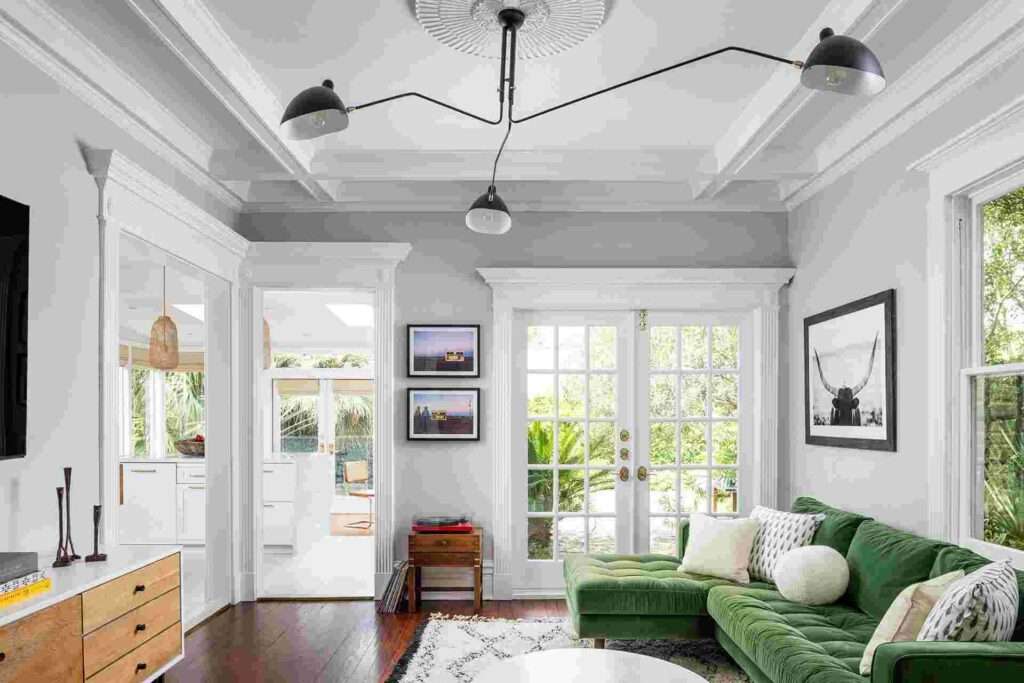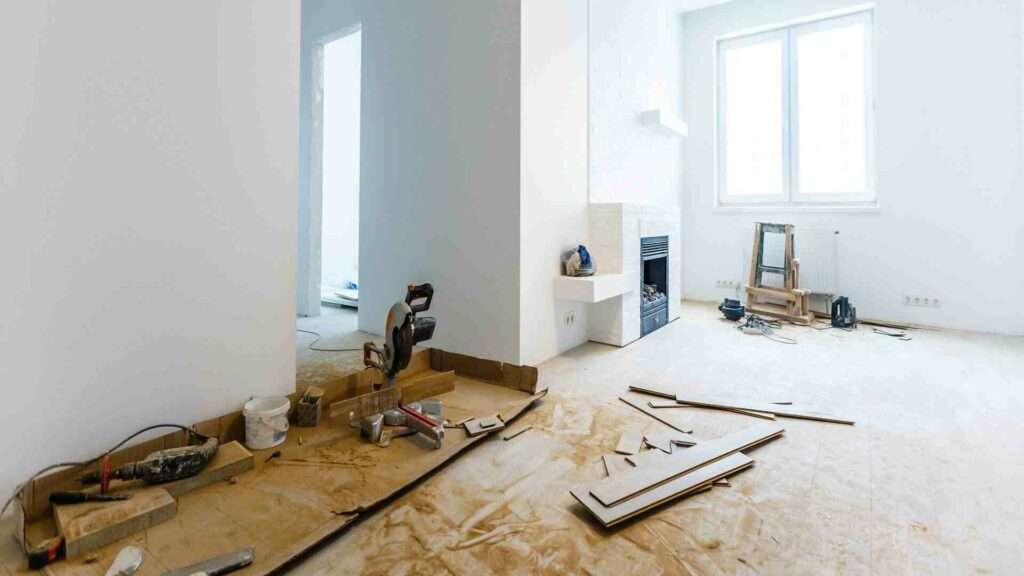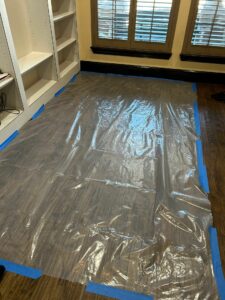Blogs
What are the costs associated with home reconstruction?

Home reconstruction can be a significant financial investment, encompassing a wide range of expenses depending on the project’s scope and complexity. Costs vary based on factors such as the size of the home, the materials used, labor charges, and the extent of the reconstruction required. In this comprehensive log post, Intensa Dry helps to explore these expenses can include demolition, structural repairs, electrical and plumbing upgrades, insulation, and finishing touches like flooring and painting. Additionally, obtaining necessary permits and adhering to building codes can add to the overall cost. Homeowners should prepare for potential unexpected expenses and consider obtaining quotes from multiple contractors to ensure a comprehensive budget for a successful reconstruction project.
1. Planning and Design Fees
When embarking on a home reconstruction service, the initial step involves thorough planning and design, which encompasses various fees that can add to the overall cost. These fees primarily include payments to architects and for necessary permits and inspections.
Architect Fees:
Hiring an architect is essential for a well-thought-out reconstruction plan. Architects provide detailed designs and blueprints that guide the entire project, ensuring that it meets your vision and adheres to building codes. The cost of hiring an architect can vary significantly, typically ranging from $2,000 to $8,000. Alternatively, some architects charge a percentage of the total project cost, usually between 5% and 15%. This fee covers initial consultations, design drafts, and final blueprints.
Permits and Inspections:
To comply with local building regulations, obtaining the appropriate permits is mandatory. Permit costs depend on the project’s scope and local government fees, ranging from $500 to $2,000. Inspections are also necessary at various stages of the project to ensure that the work meets safety and code standards. These inspections are usually included in the permit fees, but additional costs may arise if re-inspections are required.
2. Demolition Costs
Before reconstruction can commence, existing structures, walls, and fixtures that no longer serve the new design need to be removed. Demolition costs can vary based on the extent of the work required. The process involves tearing down old structures, which can include anything from removing a few walls to gutting entire rooms. The cost for demolition typically ranges from $2,000 to $10,000. Factors influencing the cost include the size of the area being demolished, the type of materials involved, and the complexity of the work. For instance, demolishing a load-bearing wall requires more care and expertise, thus increasing the cost. Proper disposal of the debris also adds to the overall demolition expense.
3. Foundation and Structural Work
A solid foundation and robust structural framework are critical for the longevity and safety of your reconstructed home. Addressing foundation and structural issues can be one of the more costly aspects of a reconstruction project. If your home’s foundation is damaged or unstable, it must be repaired or replaced to ensure the new construction is secure. Foundation repair costs can range from $5,000 to $30,000, depending on the severity of the damage and the repair method. Minor cracks might only need simple fixes, while major issues could require extensive work, such as underpinning or installing new support structures.
Updating the structural integrity of your home to meet current building codes and support new designs can add an additional $1,000 to $10,000 to your budget. This might involve reinforcing beams, adding support columns, or upgrading load-bearing walls. These enhancements are crucial for ensuring that your home can safely handle the new layout and any additional weight from new materials.
4. Materials

The choice of materials significantly impacts the overall cost of home reconstruction. From framing to roofing, each material choice contributes to both the aesthetic appeal and functionality of your home. Framing forms the skeleton of your home, and its cost can range from $3 to $12 per square foot. The price varies depending on whether you choose wood or steel, with wood being the more traditional and often less expensive option. Steel framing, while more costly, offers greater durability and resistance to pests and fire.
The roof is a critical component of your home, protecting it from the elements. Replacing or repairing the roof can cost between $5,000 to $15,000. The cost depends on the roofing material used, such as asphalt shingles, metal, or tiles. Asphalt shingles are typically the most affordable, while metal and tile roofs, although more expensive, offer longer lifespans and better durability.
5. Interior Finishes
Interior finishes transform the bare structure into a livable and aesthetically pleasing space. Costs for interior finishes can vary widely based on the materials and level of customization. Installing new drywall is essential for creating smooth, finished walls and ceilings. The cost of drywall installation typically ranges from $1.50 to $3 per square foot. This includes hanging, taping, mudding, and sanding the drywall to create a seamless surface ready for painting or wallpapering. Flooring choices significantly impact both the look and feel of your home. Costs for new flooring range from $3 to $12 per square foot, depending on the material. Hardwood flooring is a popular choice for its classic look and durability, but it is on the higher end of the price spectrum. More affordable options include laminate, tile, and carpet, each offering different benefits in terms of cost, maintenance, and appearance.
6. Utilities and Systems
Updating or installing new utilities and systems is a crucial part of home reconstruction, ensuring that your home is functional, safe, and comfortable. The cost of plumbing work can range from $4,000 to $15,000. This includes installing new pipes, fixtures, and appliances, as well as updating old plumbing systems to meet current codes. Complex plumbing tasks, such as relocating bathrooms or kitchens, can increase costs due to the additional labor and materials required.
Installing or upgrading heating, ventilation, and air conditioning (HVAC) systems typically costs between $5,000 to $15,000. A modern HVAC system improves energy efficiency and ensures that your home maintains a comfortable temperature year-round. This cost includes ductwork, the HVAC unit itself, and labor for installation.

7. Labor Costs
Labor costs represent a significant portion of the overall expense in home reconstruction projects. These costs can vary based on the complexity of the work, the location, and the experience of the contractors involved. Hiring a general contractor to oversee the reconstruction project typically costs 10% to 20% of the total project cost. General contractors coordinate various aspects of the project, including hiring subcontractors, scheduling work, and ensuring that the project stays on track and within budget. Their expertise can be invaluable in managing the complexities of reconstruction.
8. Miscellaneous Costs
Several miscellaneous costs can arise during a home reconstruction project, often related to finishing touches and ensuring the site is clean and safe. After construction, landscaping may be needed to restore or enhance the outdoor areas affected by the reconstruction. This can include planting grass, flowers, trees, and installing new pathways or driveways. Landscaping costs can range from $1,000 to $5,000, depending on the extent of the work and the types of plants and materials used.
If the reconstruction project is extensive, you might need to move out temporarily. The cost of temporary housing varies based on location, duration, and the type of accommodation. Renting an apartment or house can add several thousand dollars to the overall project cost, especially if the project extends over several months.
9. Contingency Fund
A well-planned reconstruction budget should include a contingency fund to cover unexpected expenses that may arise during the project. This fund acts as a financial buffer, ensuring that the project can proceed smoothly without financial strain. Unexpected issues such as discovering hidden damage, structural problems, or the need for additional materials can increase costs. A contingency fund of 10% to 20% of the total project budget is recommended to cover these unforeseen expenses. For example, if your project is estimated to cost $100,000, setting aside an additional $10,000 to $20,000 can help manage any surprises.
10. Financing Costs
Many homeowners finance their reconstruction projects through loans, which come with their own set of costs that must be factored into the overall budget. If you are financing the reconstruction with a home improvement loan or a mortgage refinance, consider the loan origination fees, interest rates, and other associated costs. Loan fees can range from 1% to 5% of the loan amount, while interest rates vary based on creditworthiness and market conditions. For example, a $50,000 loan with a 5% interest rate over 10 years will incur significant interest payments in addition to the principal amount.
11. Finishing Touches
The final phase of reconstruction involves adding finishing touches that enhance the home’s aesthetic appeal and functionality. Installing new trim and molding provides a polished look to the reconstructed areas. The cost for trim and molding can range from $1,000 to $3,000, depending on the materials and the intricacy of the designs. Upgrading or installing new fixtures and appliances is an essential part of finishing the reconstruction. Costs for new fixtures (like faucets, lighting, and hardware) and appliances (such as stoves, refrigerators, and washers) can add up quickly, typically ranging from $5,000 to $20,000.
12. Warranty and Maintenance
After the reconstruction is complete, it’s crucial to consider the costs associated with warranties and ongoing maintenance to protect your investment. Many contractors and manufacturers offer warranties on their work and the materials used. These warranties can cover defects and repairs for a specified period, typically ranging from one to ten years. While some warranties are included in the initial cost, others might require additional fees. Regular maintenance is necessary to keep your newly reconstructed home in top condition. This includes servicing HVAC systems, inspecting the roof, cleaning gutters, and maintaining landscaping. Annual maintenance costs can range from $500 to $2,000, depending on the size of the home and the complexity of its systems.
Conclusion:
In conclusion, the costs associated with home reconstruction are influenced by various factors, including the project’s size, materials, labor, and the extent of the work required. Proper planning and budgeting are crucial to managing these expenses effectively. Homeowners should consider obtaining detailed quotes from multiple contractors, allowing for a comprehensive understanding of potential costs and avoiding unexpected financial burdens. Additionally, staying informed about necessary permits and building codes can prevent delays and additional expenses. With careful preparation and informed decision-making, homeowners can navigate the financial aspects of home reconstruction, ensuring a successful and well-executed project that enhances the value and functionality of their home.

